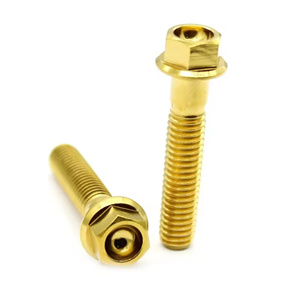CNC Turning can achieve high-precision and high consistency in production. It precisely controls the tool’s motion trajectory and cutting parameters through pre programmed instructions, ensuring that the size and shape of each Hex Bolt meet strict standards. For example, for the hexagonal contour of the bolt head, CNC Turning can accurately turn the length and angle of each side with minimal error.
In terms of production efficiency, CNC Turning also performs well. It can achieve automated continuous processing, reduce manual intervention and clamping times, and greatly improve production speed. Compared to traditional processing methods, it can significantly shorten the production cycle when producing Hex Bolt on a large scale.
The utilization rate of materials can also be optimized through CNC Turning. By precise calculation and control, material waste can be minimized to the greatest extent and production costs can be lowered.
In addition, CNC Turning also has flexible processing capabilities. According to different specifications and requirements, the machining program can be quickly adjusted to produce various sizes and thread specifications of Hex Bolt. For example, bolts with different diameters ranging from M6 to M20.
CNC turning is an efficient, precise, and flexible method for producing custom fasteners. Through CNC turning technology, custom fasteners of various shapes, sizes, and specifications can be customized according to the specific needs of customers. The following are the main steps and advantages of CNC turning to produce custom fasteners:
Main steps
Design and programming:
Use CAD (computer-aided design) software to design a 3D model of custom fasteners, including threaded parts, head shape, etc.
Use CAM (Computer Aided Manufacturing) software to convert 3D models into machining programs (G code or M code) that CNC machine tools can understand.
Material preparation:
Choose suitable materials such as stainless steel, carbon steel, alloy steel, etc. to meet the performance requirements of custom fasteners.
Prepare blanks, usually cylindrical bars, for turning processing.
CNC turning:
Install the blank on the CNC lathe.
Through computer control, the turning tool performs precise turning operations according to the preset machining program, gradually removing excess materials and forming the threaded part and head shape of custom fasteners.
Thread detection:
Use thread gauges or other inspection tools to perform thread inspection on the finished custom fasteners, ensuring that the thread accuracy meets the requirements.
Subsequent processing:
As needed, custom fasteners can be subjected to heat treatment, surface treatment (such as galvanizing, spraying, etc.) to improve their corrosion resistance or decorative properties.
